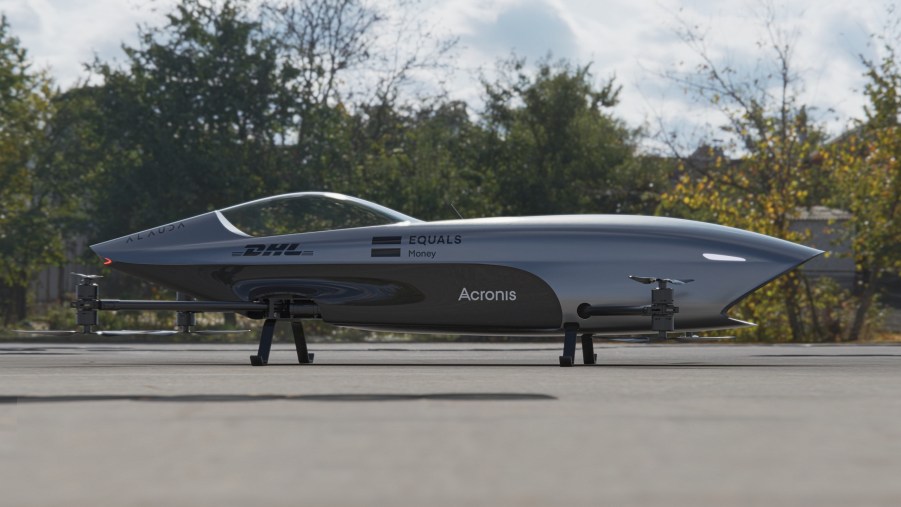
Airspeeder Flying Car Races Set For Later This Year
Airspeeder is gearing up to begin its flying car series starting later this year. These will be uncrewed and remotely piloted. The remote operator will control the combined F1 race car/fighter jet/helicopter from the ground. In many respects, these are like oversized drones.
The Airspeeder’s design is inspired by 1960s Grand Prix cars

Airspeeder unveiled its Mk3 prototype at last year’s Goodwood Speed Week. Its design is said to be inspired by 1960s Grand Prix cars. The frame and fuselage are carbon fiber but the next version of Airspeeder will be of a monocoque design. LiDAR, Machine Vision, and Radar collision avoidance systems are part of the package to avoid mid-air collisions.
Battery storage allows for quick replacement during a race

Slide-and-lock battery storage allows for quick replacement during a race. Each racer will be allowed a 14-second pit stop for battery changes. These pit stops are necessary due to the intense drain from the 320kW electric motors.
Strategies surrounding the battery life will be explored in testing. Right now there is debate as to whether it is better to go as fast as possible, requiring more battery replacement. Or if it is better to slightly throttle back for battery longevity.
The 0-62 mph performance is achieved in 2.8 seconds. Uncrewed, each Airspeeder weighs 287 lbs and can lift more than half of its weight. Its thrust-to-weight ratio is better than an F-15 Strike Eagle jet. The Airspeeder is able to climb to 1,640 ft. and can hit speeds of 75 mph.
All of Airspeeder’s systems are monitored by telemetry

Redundant systems are incorporated into the build just as in aircraft use for safety in case one system fails. All systems are monitored by telemetry so any problem is instantly announced allowing the crew to land the Airspeeder safely.
Though these initial races will be uncrewed, by 2022 the company plans on beginning crewed racing. Its format will be like Formula 1 with a pilot sitting in the cockpit just as one does in an F1 car. This will be the first such racing event ever in the world.
The uncrewed races are necessary to serve as a test of the technologies used for the Airspeeder. Engineers have come from McLaren, Babcock Aviation, Boeing, Jaguar Land Rover, Rolls-Royce, and Brabham.
Racers can pass around or under other Airspeeders

Racing will be in remote locations and up to 10 Airspeeders will race in close proximity. Racers can pass around or under other Airspeeders for thrilling air-to-air action. A “force field” of sorts will surround the track so that racers can’t cheat and cut corners or sections of the track. Cameras will be placed to capture and stream every portion of the track and racing action.
So far Alauda, the parent company of Airspeeder, is finishing up 10 vehicles right now. They will soon be parsed out to teams for testing. They’re calling it, “The future of motorsports in the not too distant future.”



